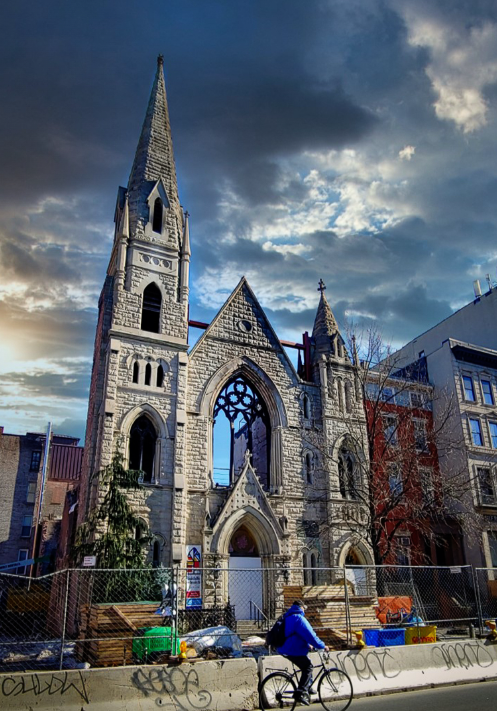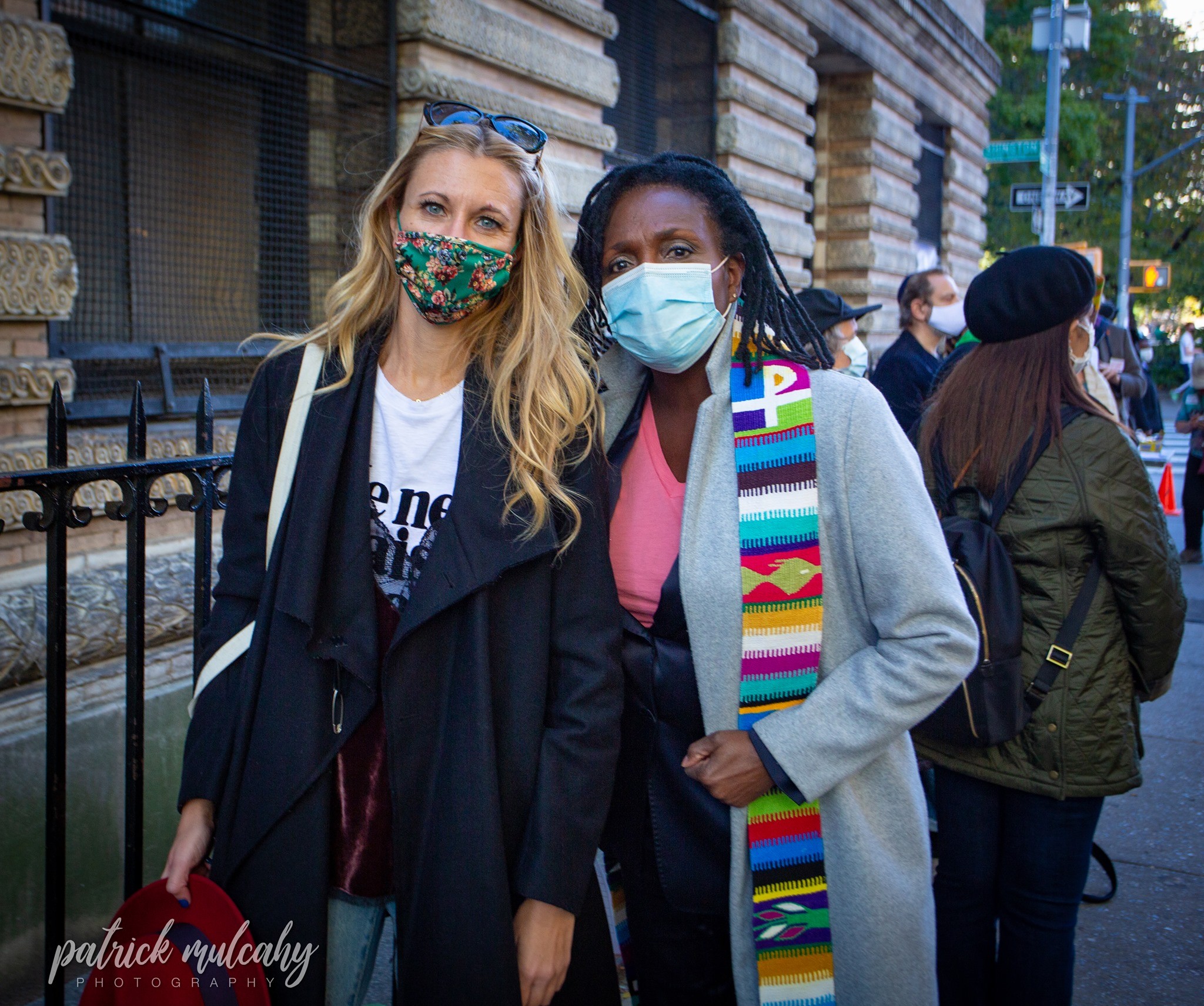Middle Collegiate Church in New York City cleared a major municipal hurdle Jan. 10 that clears the way for construction of a new building at the site where fire destroyed its historic East Village facility just over two years ago.
“WOW WOW WOW! We write to you this morning with wonderful news,” Senior Minister Jacqui Lewis said in an email to the congregation a day after the city’s Landmarks Preservation Commission voted 8-2 to approve the removal of the remnants of the iconic facade that withstood the Dec. 5, 2020, blaze.
 “Together, we will build something beautiful that is rooted in our values, recognizes our place in the community, and compliments the historic district,” she said.
“Together, we will build something beautiful that is rooted in our values, recognizes our place in the community, and compliments the historic district,” she said.
But getting to that pivotal moment was far from easy for the congregation known for its local and global social and racial justice outreach.
Despite providing engineering studies proving the facade was unstable and could not be included in new construction, the church faced staunch opposition from Landmarks Commission members and local preservationists intent on saving the remnants of the building completed in 1892.
The Lower East Side Preservation Initiative warned against the proposed demolition in a 2022 letter to the Landmarks Commission, arguing that the facade is “one of the most important historic structures within the East Village/Lower East Side Historic District.”
The organization expressed sympathy “with the congregation and the very difficult challenges it has faced and continues to face. However, the demolition of the church, which has served as both an architectural and spiritual beacon for over a century, would have a huge impact on the community as well as the special character of this very important historic district.”
The opposition resulted in a Nov. 3 commission vote rejecting the church’s request, essentially blocking it from rebuilding on that site.
“We couldn’t just take it down without the Landmarks Commission’s approval. So, that hearing in November was a huge oh-my-gosh moment — what do we do now?” said Amanda Hambrick Ashcraft, Middle’s consulting community minister.
 The church responded by bringing in more engineering and architectural data and by pressing state and local officials for support in the effort to “rebuild a justice and spiritual center for our neighborhood.”
The church responded by bringing in more engineering and architectural data and by pressing state and local officials for support in the effort to “rebuild a justice and spiritual center for our neighborhood.”
The lobbying worked. Leading up to the Jan. 10 commission hearing, Middle Church received letters of support from State Assembly members Harvey Epstein and Deborah Glick, Manhattan Borough President Mark Levine and New York City Council member Carlina Rivera.
“We also know that the mayor’s office was following our case very closely,” Hambrick Ashcraft said. “It is a big deal for an elected official to come out against the Landmarks Commission.”
Alternatives to rebuilding at the site included moving elsewhere in the city or joining with another church. None of those were desired, she said. “We love the East Village. We want to stay here because we have a strong footprint here and this is an historic and holy place for us.”
The church, which is affiliated with the United Church of Christ and Reformed Church in America, has agreed to work with the Landmarks Commission to design a building that evokes the structure lost in the 2020 fire. That includes using as much of the original facade in the new church as possible, Hambrick Ashcraft said. “They want us to work with them to create something that saves whatever stones we can and to build something that is true to the historic nature of that location.”
But that design work has yet to begin due to the uncertainty and delays caused by the permitting process, she said. “As soon as possible, we are going to get a plan and finalize our team for the rebuild.”
In the meantime, the church is meeting at East End Temple synagogue while continuing its “Middle Rising” fundraising campaign to generate $15 million toward construction.

Amanda Hambrick Ashcraft (left) and Jacqui Lewis.
Both Lewis and Hambrick Ashcraft acknowledged that getting the greenlight to remove the facade has had an emotional effect on them and the congregation.
“It’s true to say that Tuesday’s decision did bring about a simultaneous relief and renewed grief because it is sad to say we are going to be taking down this beautiful steeple. And yet it is absolutely the right thing to do. So, there is renewed grief in knowing that it is actually going to come down,” Hambrick Ashcraft said.
Lewis acknowledged feeling a sadness after finally getting the news the church can move ahead with design and construction.
“After the initial joy, however, I noticed how palpably my heart still feels the grief. I treasured our sanctuary so deeply — all the love we shared, the songs reverberating even after the singing ended. I know we’re doing what must be done, but there’s a wistfulness alongside celebration,” she said in a message emailed to the congregation Jan. 12.
Related article:
Fire destroys historic home of Middle Collegiate Church in New York
